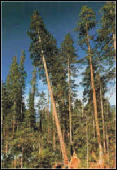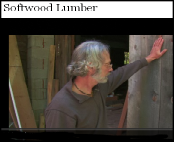























If you create a CLOCK for a project it is most important you research existing clocks. What have other designers done before and how good do you think their end result has been ? How easy to read is the clock face? Does the clock-face really need numbers or can we tell the time well enough just by the position of the hands? Should your clock be ‘free-standing’ or should you design it for wall-hanging? What different ‘plastics’ are there that might be used and what processes could be used to shape them ? From what height will the clock be seen - If it is for a low table then it may need to be
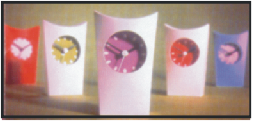
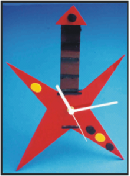
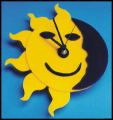
tilted back on its stand. Maybe consider a promotional clock that is based an card - or thin ‘folded’ plastic packaging.
There are many great starting points for a task like this - and the best thing about the outcome is that you finally have a useful product. Above all make your clock great to look at or fun to use as well as being well designed !
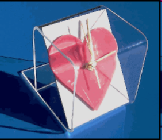
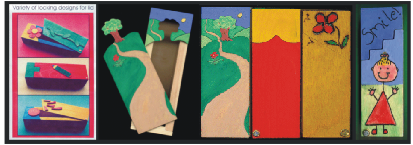

Year 7 ~ Thinking about the projects ....
One project that can be a good way of developing your skills in the workshop - as well as exercising your design skills is the making of a wooden pencil box that has a ‘locking’ lid. Why not try making the locking piece of your pencil box design into a part of a picture. You could try a three dimensional design like the ones on the left hand illustration or you could try a two-dimensional picture like the ‘countryside scene’. Simple geometric designs can be effective too and need not be part of the locking mechanism of the lid if you prefer. Maybe you can come up with your own different way of keeping the lid locked in place. Firstly it would be useful to find out a little about timber and timber products. We tend to talk of ‘wood’ but as you already know we might mean ‘Oak’ or ‘Pine’ or ‘Mahogany’ - all of which are different types of tree but we might add many other names of different kinds of ‘wood.’ There are also quite a few timber products - ‘ Manufactured Boards’ - many of which you will already have heard of - ‘Plywood’ or perhaps ‘MDF’ for instance. ( Try this quiz ) But if we were making our item using some sort of wood rather than manufactured board we could start by asking one important question.
Remember that this question has nothing to do with how ‘hard’ a particular wood feels! Even though we may use the wood for a box there are many uses for timber. Read on!
Is it a “HARDWOOD” .. or is it a “SOFTWOOD” ?
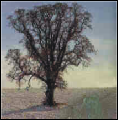
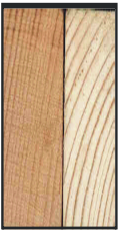

The easy way to tell if a tree is hardwood or softwood is to think about what sort of leaf it has. If it has broad leaves and loses them in Winter then it is fairly certain to be a hardwood. The seeds are another clue, as broad-leafed trees have seeds inside fruit or nuts. Apples and acorns are both example of fruits from hardwood trees. Holly and Laurel keep their leaves and are therefore called ‘ever-green’ but still have the broad leaves of hardwoods. Softwoods are usually ‘evergreen’ and have thin needle-like leaves. Their seeds are fir-cones and can often be seen on the trees well after they have formed. Softwoods are happy to grow in colder climates than hardwoods and generally grow much quicker. This is why there are large areas in Wales and Scotland that are covered in fir-trees - these lands are being ‘farmed’. When trees are cut down and sawn up, more are planted to be cut down 15~20 years later. If you look at the grain pattern of the different kinds side-by-side you can see how much farther apart the softwood rings are with its quicker rate of growth. Now check out the pattern of the grain on a plank or piece of wood. You should easily be able to see how the section has been cut from the original tree trunk. Trees are very strong in their long-direction... The grain is easily slit if it is pulled apart and so when working with wood care has to be taken. Now look at these Now look at these last three diagrams and write down what you think they show about the preparation of timber.

Video
Why donate ?


